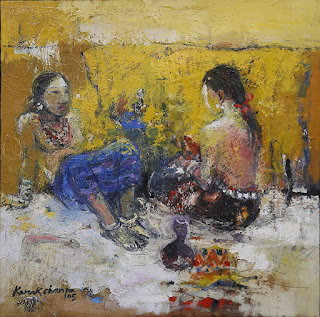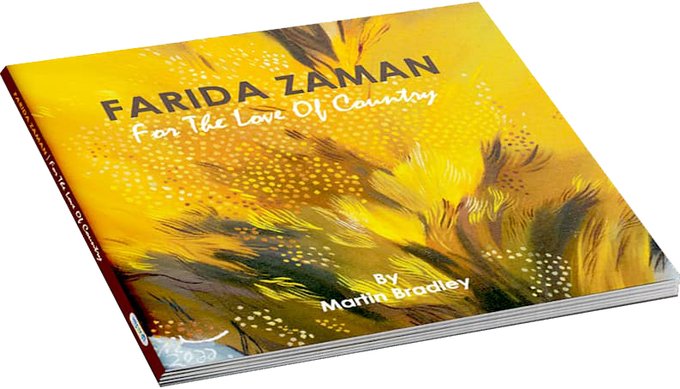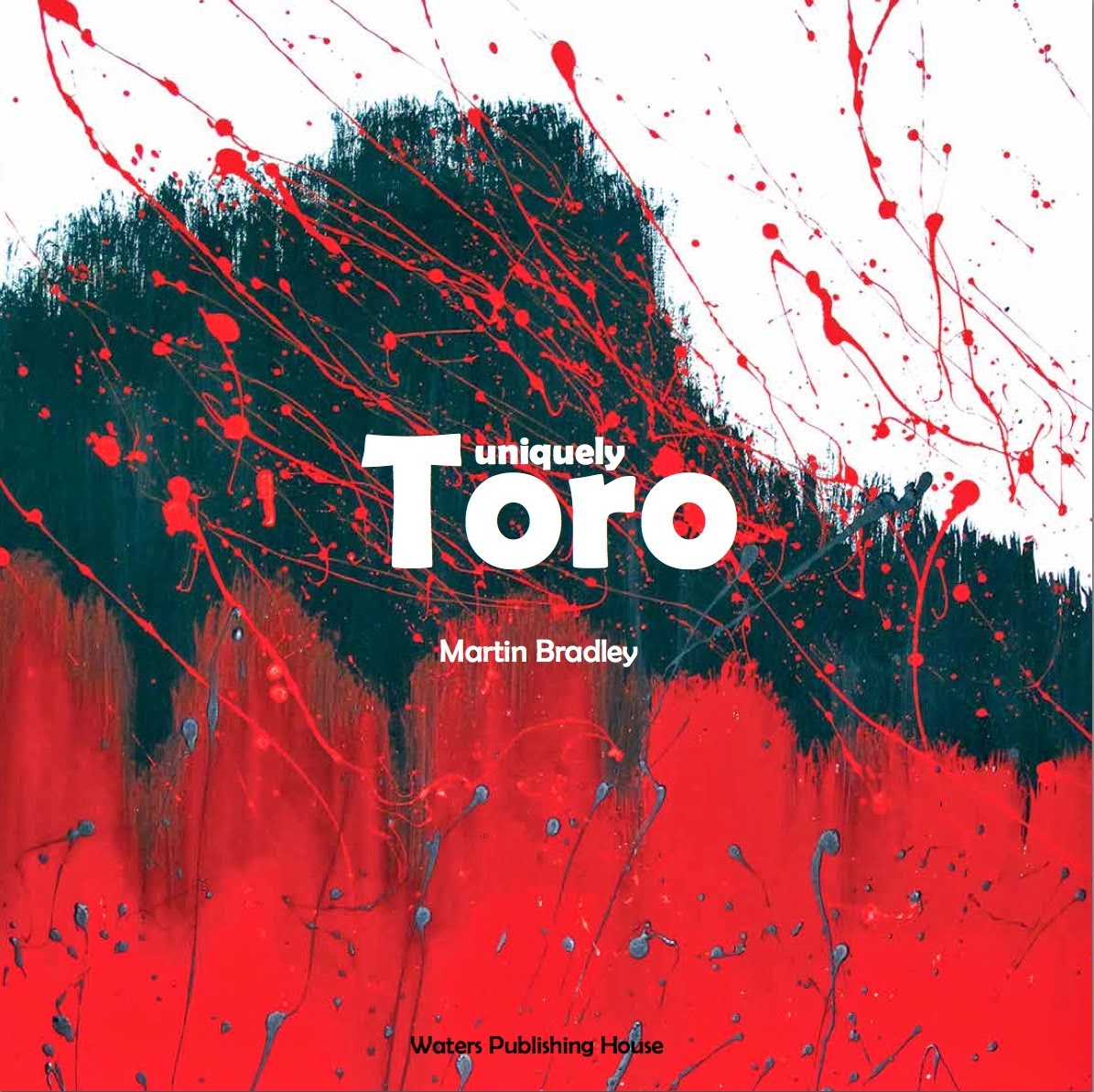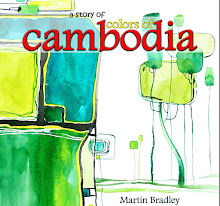On this day, in Siem Reap, it had rained. Small pools of water in the fields had been growing larger as we descended towards Siem Reap International Airport. The shudder of touch-down invigorated the usual clamour to disembark, the rush to obtain visas, clear immigration/customs and to finally greet various drivers, friend, relatives or representatives of various lodgings.
I was alone, at Ellen’s Cafe (Samdech Tep Vong Road Mondul 1 Village), and had just read, online, an article in the Phnom Penh Post revealing Phany and Phanin’s passionate interests in art, and martial arts. The article ‘The twins aspiring to empower kids, women through art, fighting’, by Pann Rethea, spoke of female empowerment, and aspects of confidence boosting in a male dominated Khmer society. The Khmer twins (Sor Sophany and Sor Sophanin) have chosen art and Khmer culture, as standpoints.
Phany and Phanin, together, have grown into a profound love for art. Phany has risen too become manager of one art charity - Colors of Cambodia, where she and her sister studied, while her sister Phanin has been a manager at Artisans Angkor, a Cambodian social business reviving traditional Khmer craftsmanship, in Siem Reap.This love of art and culture has been facilitated by Khmer art teachers who, themselves, were taught in Cambodia’s northern town, Battambang, at Phare Ponleu Selpak, a non-profit Cambodian association improving the lives of children, young adults, and their families through art. In Siem Reap, aid towards Colors of Cambodia has materialised from as far afield as the US of A, with artists like Michigan born Julia Haw, also from Singapore with Foo Kwee Horng enabling and empowering young Khmer artists.
Over time, the Cambodian twin sisters (Phany and Phanin) have become prominent in a freshly emerging Cambodian Surrealist art scene. The sisters blend their knowledge of Cambodian culture with Western painting techniques, including oil, acrylic and water colours as well as the use of coloured pencils, or pastels, to produce stunningly original works of art. The twins’ distinct artworks have spoken of an emerging Khmer feminism, of female empowerment and of their happy/sad lives as identical twin sisters in a Cambodia still reaching towards modernity, especially within the realms of gender relations.
‘A Storyscape in Dance’ is a predominately yellow and blue painting by Phany. In Cambodia, yellow is a symbol of happiness, of friendship, of enthusiasm, of luxury, of success, and of pride. Two figures, in yellow, dominate the picture. The two figures are standing amidst a washed out blue (the colour of royalty, of freedom) and are practically identical. Their hands are attached, left hand to right hand as they face inwards, into the painting, perhaps divining their futures. Similar to many other paintings created by either one of the twins, the concept of their togetherness, of the special pride they hold for their nature as twins, often dominates. Though fiercely proud of their Khmer heritage, the twins are equally proud of their uniqueness as twins.
In her painting ‘Massive Dream Girls’, Phany has drawn from the energy of an organic Surrealism otherwise seen in the British Surrealist Desmond Morris and the Catalan Surrealist Juan Miro’s works. In that painting Phany has taken her dreamlike imagination to its limit. She metamorphoses herself and her sister into a quasi erotic synthesis of potent, yet unidentifiable, organic forms resembling a fluidity of droplets and globular forms.
Other paintings ease the more surreal elements into the background, while bringing reflections of Khmer culture to the fore. This can be witnessed in Phany’s painting ‘Kenor’*. In ‘Kenor’ the female figure is an ‘Apsara’** like being. Phany explains that Khmer Apsaras cannot fly, unlike Indian apsaras who are messengers of the gods. Phany’s Khmer Kenor is a demigod-like mythical being with an ornamental crown of gold. The Khmer people believe that the Kenor (Neang Kenor) are half-women, half-bird deities living in the heavens. In modernity, Kenor are frequently represented through Khmer dance, as are apsaras. A Kenor also features in her sister Phanin’s painting, where a Kenor is trying to help an angel who has been chained to a block. A radiant sun shines on the empathy the Kenor shares with the trapped angel. Angles, Apsara and Kenor are metaphorically ‘sisters’ within Khmer mythos, thus symbolically emphasising the closeness shared by the Khmer twins. Another image (by Phanin) has a Kenor embracing a naked Angel. They sit, the Angel is resigned to the comfort her ‘sister’ mystical being exudes. The Kenor smiles a peaceful smile.
In the upstairs art room of one Cambodian art charity, next to twin wall-mounted Khmer Trou Ou (musical instruments-often played by Phany and her sister) hangs another painting by Phany. This canvas features stone steps, a ladder in perspective and before it a representation of the twins, as apsaras. The twin on the right ((dressed in pink) faces the ladder, on her long black hair is an apsara crown. She has her arm entangled with her sister (in green) who faces the onlooker with a paper mask over her face. The female figures are framed in the foreground by large standing pillars. The two women, one looking forward, but masked, and the other looking towards the ladder, reveal a dichotomy besides their being identical twins, the individuality of their characters and the obverse and reverse nature of the painting’s figures. Two ladders are traditionally used to enter Khmer houses, for only the solidity of temples had stone steps. Houses were raised to be away from annual flood waters (May to November). Can the sisters climb the ladder while one is held in thrall by those who view. Can they disentangle themselves to lead separate lives. It is a dilemma. Phanin’s surreal painting of Cambodian flowers dominates the wall opposite.
In more recent paintings, Phany experiments with a change of style. Gone is the blended smoothness of the earlier surreal work. This is ejected in favour of a more textual approach to her painting. Phany’s background subject matter becomes reminiscent of the Italian proto-surrealist Giorgio de Chirico, but with a more highly textured foreground, as if revealing the angst of her subject within the depth of the paint, as well as in the painting itself.
Gradually Phany moves towards a painterly magical realism. She maintains colours from previous paintings but, in places, interjects this with a stark expressionism. One such oil painting, her latest - ‘Endless hope’, is dominated by her surreal colouration in the mid and background, but the foreground features a highly textured, practically expressionistic, figure of a young man drinking from a bottle of water. He stands next to a school bench. Phany explains that this is a scene she witnessed when she was younger. The water-bottle is old, the water brackish. The young, poor, student is ashamed of his ageing water bottle and hides it from view when he can. He grows, remembering his poverty. It is a human reenactment of the story of the lotus. The lotus, revered in Cambodian Buddhism, emerges from its humble beginnings in a lake’s mud. It strives and reaches into the sunlight, then blossoms. Many varieties of lotus are both wild, and cultivated, across Cambodia.
One exuberant painting, titled ‘A Little Peace’ sees Phany furthering her new style. A jewell faceted head, in purple, sits on a body half blue and half pink, as if the notion of ‘twin’ becomes merged into one being. A Buddha -like figure demonstrates a ‘Mudah’ or significant Buddhist hand gesture. Perhaps a blessing or protection (Abhaya). In the painting elements of Expressionism meet fragments of Cubism and organic Surrealism in a canvas dedicated to peace, with intimations of former horrors. This is achieved, subtly, through her stylistic melange which surprises and delights at one and the same time.
Phany’s sister Phanin has also experimented with Expressionism and a fantasy based Surrealism. ‘The hurt want what want’ reflects all the angst of Norwegian Edvard Much’s ‘The scream’. Phanin’s tortured figure is in red, while the background is a moody blue.
While we marvel at Cambodia’s painting twins Phany and Phanin, there are twin sisters painting in Britain too. The British Singh Twins (Amrit Kaur Singh and Rabindra Kaur Singh), who were born in London of Indian decent, use traditional techniques seen in Indian miniature painting, but in a contemporary way. Their vibrant works have been seen in galleries across the world, and one can only hope that the same fate awaits the Khmer twins Phany and Phanin.
A Kenor is a mythical female dancer with a body half-human and half-bird.
**According to the Oxford Dictionary - An Apsara is a type of female spirit of the clouds and waters in Hindu and Buddhist culture. They figure prominently in the sculpture, dance, literature and painting of many South Asian and Southeast Asian cultures.















